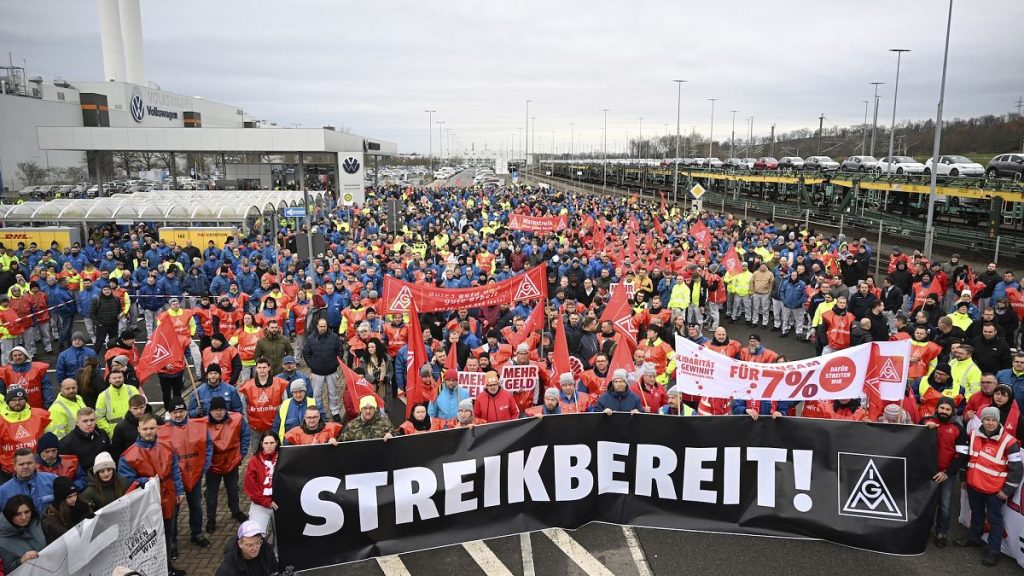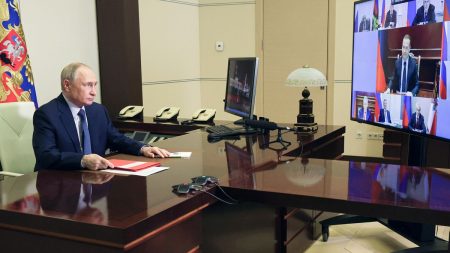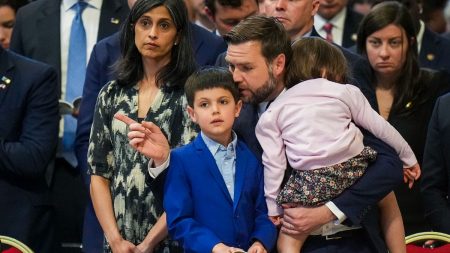Volkswagen workers have mounted rolling two-hour strikes at nine different plants across Germany to express their dissatisfaction with the company’s proposed cost-cutting measures. This industrial action comes in response to plans threatening to reduce factory operations and cut wages amid a downturn in the European automotive market. The strikes included a significant protest at Volkswagen’s flagship plant in Wolfsburg, where thousands of workers rallied against the management’s decision to potentially close factories in Germany. Protests were vocal, with reports of “whistles and shouts” resonating throughout the Wolfsburg area, underscoring the collective frustration of the workers with the company’s direction amidst faltering negotiations between the company and labor unions.
The strife stems from Volkswagen’s plans to close at least three plants and cut approximately 10% of employees’ wages as part of broader cost-reduction strategies. Management has justified these difficult decisions by citing increasing wage expenses, a scarcity of raw materials, and challenges in transitioning to electric vehicle production. As the automotive giant contends with shifting market dynamics, particularly in light of rising competition from Chinese manufacturers, workers are increasingly concerned about the implications of management’s decisions, fearing job losses and diminished prospects for the future of the company.
Employee representatives, including chief representative Daniela Cavallo, are vocally opposing these cuts, asserting that workers should not be forced to bear the brunt of management’s past failures in product development and strategy. Cavallo has called for all stakeholders, including management and shareholders, to contribute toward finding a balanced solution that does not disproportionately affect employees. The workers’ protests come at a critical time, with upcoming elections in Germany signaling potential shifts in leadership, especially given the automotive sector’s importance to the country’s economy.
Volkswagen insists that the necessary cost-cutting measures are essential to bringing their operations in Germany in line with those of their competitors, particularly those located in Eastern Europe and South America. Their argument centers on the need to adjust worker compensation and restructure factory capacities that are no longer sustainable amid declining demand. The ongoing negotiations between labor unions and management are vital, as they will likely determine the trajectory of the conflict moving forward, with representatives from the IG Metall industrial union emphasizing that the current walkouts could mark the beginning of a more profound struggle for labor rights.
As of now, Volkswagen has been tight-lipped regarding detailed plans for future manufacturing capacity and job layoffs. However, a clear acknowledgment of the drop in European vehicle demand—from a targeted annual market of 16 million to a current demand of only 14 million—has prompted serious concerns among employees. With Volkswagen commanding about a quarter of the market share, this reduction translates to a substantial loss of approximately 500,000 units per year, heightening anxieties amongst workers regarding job security. The stark reality of these numbers has led union representatives to assert that management cannot ignore the ongoing industrial actions.
The upcoming negotiations on December 9 will prove critical in determining whether a reconciliation can be achieved or if the situation will escalate further. As tensions mount, the potential for protracted labor disputes looms large, with union leaders indicating that this could evolve into one of the toughest confrontations Volkswagen has faced. The outcomes of these discussions will not only shape the future of the employees but may also have broader implications for the automotive industry in Germany and its overall economic health. The situation encapsulates the challenges faced by traditional car manufacturers in an evolving market landscape, particularly as they navigate the transition to electric vehicles while balancing the needs of their workforce.













